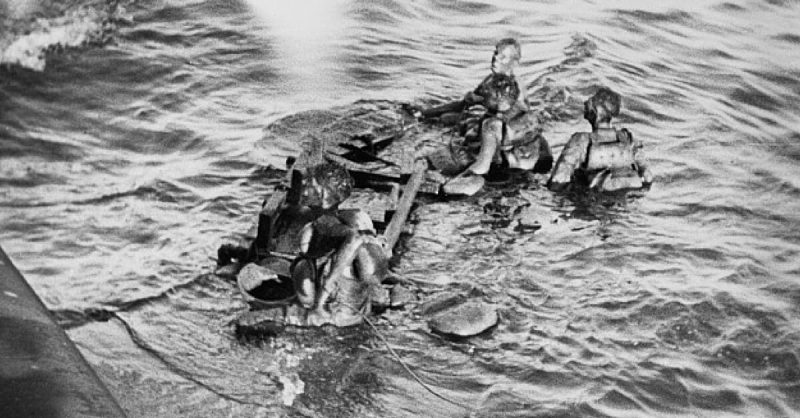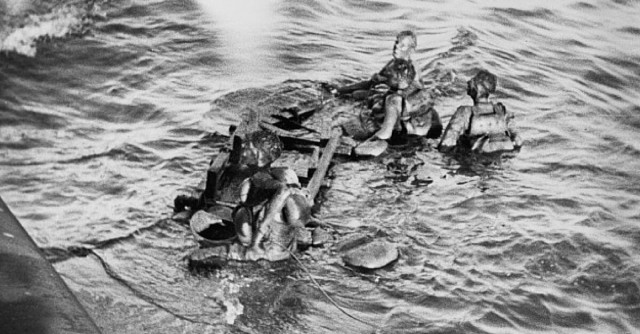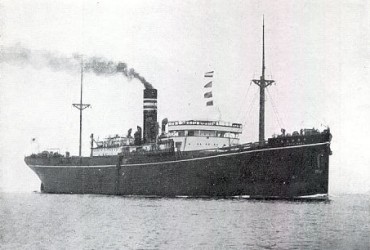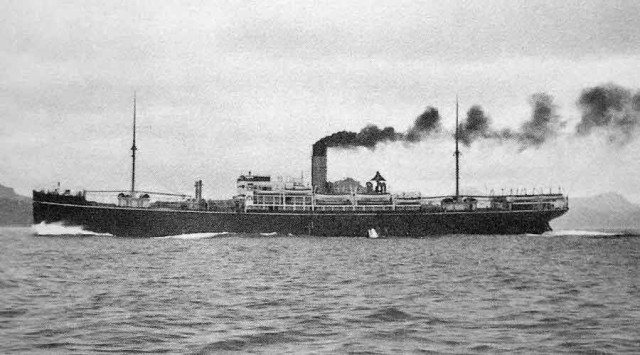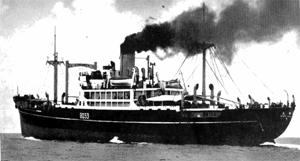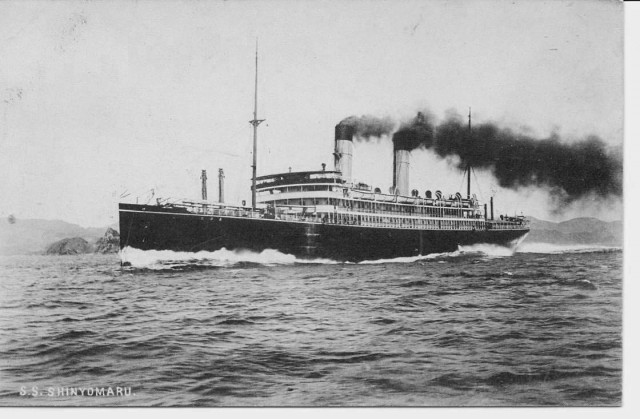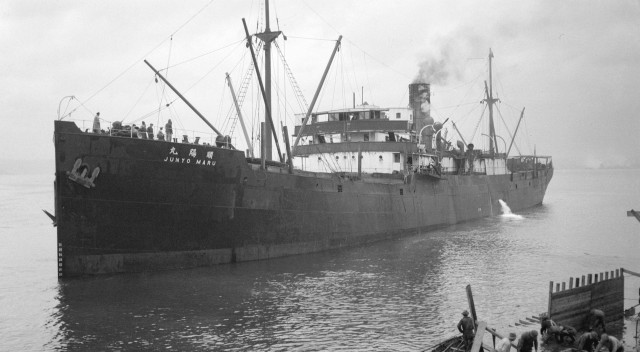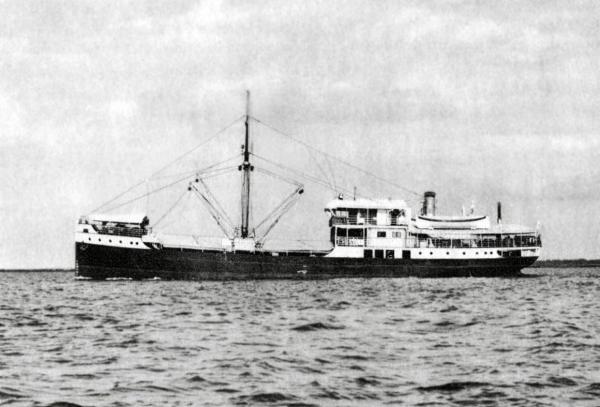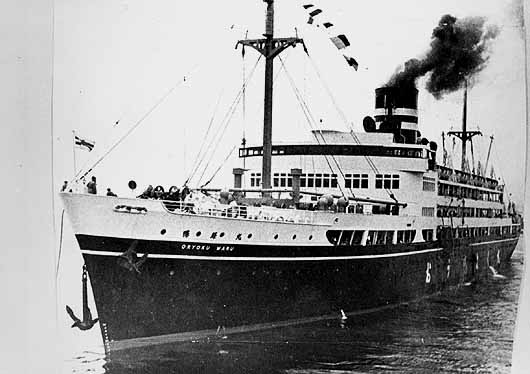In May 1942 the Japanese began transferring POWs by sea. Similar to treatment on the Bataan Death March, prisoners were often crammed into cargo holds with little air, food or water for journeys that would last weeks. Many died due to asphyxia, starvation or dysentery. Some POWs became delirious and unresponsive in their environment of heat, humidity and lack of oxygen, food, and water. These unmarked prisoner transports were targeted as enemy ships by Allied submarines and aircraft.
More than 20,000 Allied POWs died at sea when the transport ships carrying them were attacked by Allied submarines and aircraft. Although Allied headquarters sometimes knew of the presence of POWs through radio interception and code breaking, the ships were sunk because interdiction of critical strategic materials was more important than the deaths of prisoners-of-war.
This is an incomplete list of the more notorious Japanese hell ships during WWII:
Lisbon Maru
Lisbon Maru was a Japanese freighter which was used as a troopship and prisoner-of-war transport between China and Japan.
When she was sunk by USS Grouper (SS-214) on 1 October 1942, she was carrying, in addition to Japanese Army personnel, almost 2,000 British prisoners of war captured after the fall of Hong Kong in December 1941. Over 800 of these men died either directly as a result of the sinking, or were shot or otherwise killed by the Japanese while swimming away from the wreck.
The ship should have carried appropriate markings to alert Allied forces to the nature of its cargo but did not do so.
Rakuyo Maru
Rakuyo Maru was torpedoed 12 September 1944 by USS Sealion II (SS-315) which later realized the ship carried Allied POWs. It was transporting 1317 Australian and British prisoners of war from Singapore, when it was torpedoed and sunk in the Luzon Strait.
A total of 1159 POWs died as a result of the sinking.
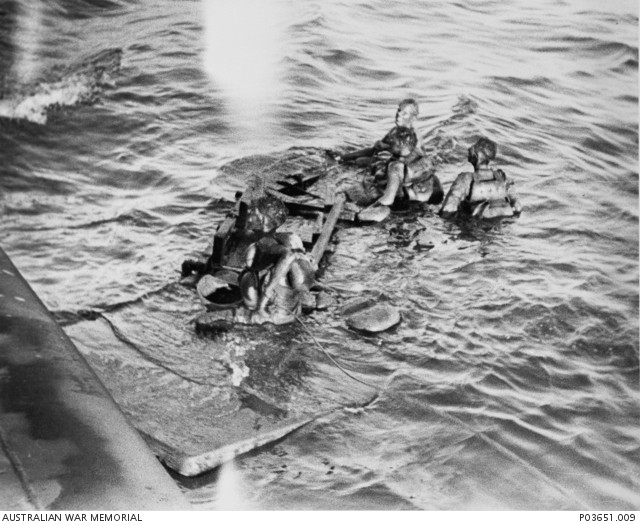
Suez Maru
Suez Maru was a 4,645-ton freighter with passenger accommodation. She sailed on 25 November 1943 with 548 POW (415 British and 133 Dutch) from Ambon bound for Surabaya. The POWs were all sick men from the work-camps on the Moluccas and Ambon. Twenty were stretcher cases.
On 29 November 1943 the ship was torpedoed by USS Bonefish (SS-223) near Kangean Island east of Madoera Island. Most of the POWs drowned in the holds of the ship. Those who escaped from the holds and left the ship were shot by the Japanese. There were no POW survivors.
Bunyo Maru
Bunyo Maru was a 5,300 ton transport carrying mainly Indian POWs of the 2nd Battalion, 16th Punjab Regiment, plus escorting forces from the 26th Field Ordnance Depot. It was torpedoed by the USS Wahoo (SS-238), commanded by Commander Dudley W. Morton, on 26 January 1943 .
Morton was responsible for ordering the machine gunning of the shipwrecked survivors, in the water, including the POWs. The Hague Convention of 1907 bans the killing of shipwreck survivors under any circumstances. Whatever the case, Morton and his executive officer O’Kane had misidentified the survivors as Japanese.
Shinyo Maru
The Allies intercepted a message about the Shinyō Maru and, thinking it was carrying enemy soldiers, the USS Paddle attacked it on September 7, 1944, off the coast of Mindanao. There were 750 American prisoners of war aboard.
Some Japanese guards shot prisoners as they struggled from the holds or were in the water; 688 died when the ship sank, leaving only 82 survivors; 47 of 52 Japanese guards died.
Junyō Maru
The 5,065-ton tramp steamer Junyo Maru sailed from Batavia (Tandjoeng Priok) on 16 September 1944 with about 4,200 romusha slave labourers and 2,300 POWs aboard. These Dutch POWs included 1,600 from the 10th Battalion camp and 700 from the Kampong Makassar camp. This 23rd transport of POWs from Java was called Java Party 23. It included about 6,500 men bound for Padang on the west coast of Sumatra to work on the Sumatra railway (Mid-Sumatra).
On 18 September 1944 the ship was 15 miles off the west coast of Sumatra near Benkoelen when HMS Tradewind hit her with two torpedoes, one in the bow and one in the stern. About 4,000 romushas and 1,626 POWs died when the ship sank in 20 minutes. About 200 romushas and 674 POWs were rescued by Japanese ships and taken to the Prison in Padang, where eight prisoners died.
Maros Maru
The 600-ton Maros Maru (sometimes called Haruyoshi Maru) sailed from Ambon on 17 September 1944 routed along the south-coast of Celebes with about 500 British and Dutch POWs bound for Surabaya. On 21 September 1944 the ship arrived at Muna Island south of Celebes) to embark 150 POWs.
The ship required engine repairs upon arrival in Makassar. Here 159 POWs died in the holds in the 40 days required to complete repairs. They got a seaman’s grave in the harbour of Makassar. Only 327 POWs survived when the ship reached Surabaya on 26 November 1944. They were transported by train to the Kampong Makassar camp in Batavia (Meester Cornelis), and arrived on 28 November 1944.
Oryoku Maru
Oryoku Maru was a 7,363-ton passenger cargo liner transporting 1,620 survivors of the Bataan Death March, Corregidor and other battles. She left Manila on 13 December 1944, and over the next two days was bombed and strafed by US planes.
About 270 died aboard ship. Some died from suffocation or dehydration. Others were killed in the attack or drowned while escaping the sinking ship.
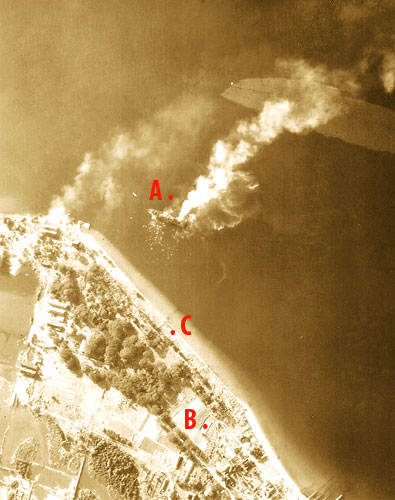
Brazil Maru
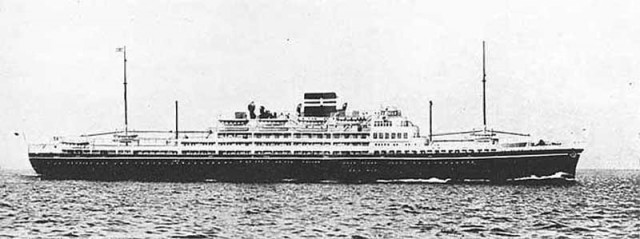
Brazil Maru transported the last surviving Allied POWs to Moji, Japan. There the Japanese medics were shocked at the wasted condition of the POWs and used triage to divide them. The 110 most severe cases were taken to a primitive military hospital in Kokura where 73 died within a month.
Four other groups were sent to Fukuoka POW camps 1, 3, 4 and 17. Of 549 men alive when the ship docked, only 372 survived the war. Some eventually went to a POW camp in Jinsen, Korea, where they were given light duty, mainly sewing garments for the Japanese Army.
